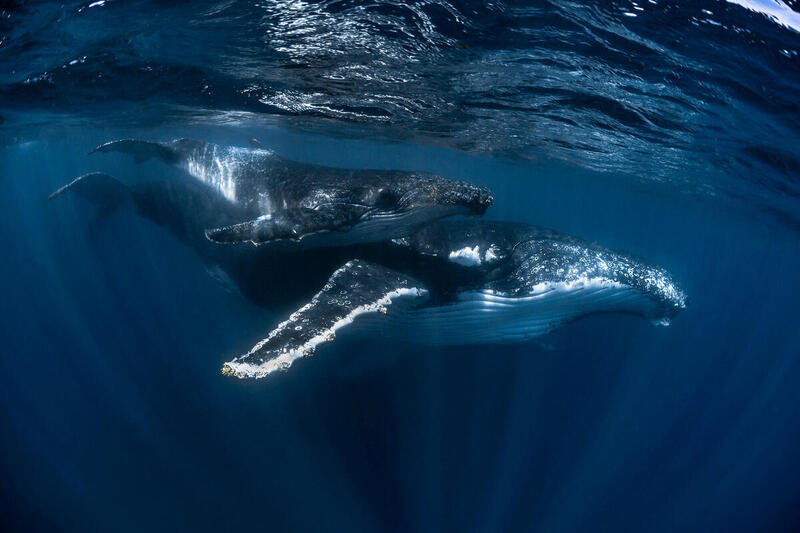
Whale watching, by Glenn Barry, Green Guardian Ambassador & volunteer
A stunning November dawn silently enveloped our beach in Sydney’s north. The Tasman Sea was having a rest. As compensation, two Humpback Whales happened to be frolicking not too far out to sea. Carefully protected by its massive parent, a young one was learning to jump. Full bodily, the juvenile launched skywards before crashing sideways back into the brine.
With surfable waves hard to find, and the alluring deep beckoning, I turned my stand-up paddle board seawards and headed for the spouting whales.
At around 800 metres out there bobbed a line of floats. Beneath the floats a shark net silently hung in wait for unwitting victims. 200 metres further offshore, the two whales were lolling around. Paddling on, I soon would have reached a spot near to but safe for these gentle beings.
Unexpectedly, a speeding boat splintered the serenity. Seemingly recklessly, the bouncing craft headed towards the parent and offspring. To evade possible impact, the whales sounded into the depths. They were gone.
I was crestfallen but decided to linger for a time, just in case the whales re-emerged. Balanced on the board in a near-teetering seat (and with my feet on deck and out of view of predators), I waited.
After a time, I gingerly shifted to standing mode ready for the long paddle back. At that same moment, and little more than fifty metres away, two large tails ever-so-gently poked up. Clearly in view were the sleek tail flukes and the small, set-back dorsal fin so distinctive to Humpbacks.
Undoubtedly aware of my presence, the inquisitive whales hung nearby, silent and motionless, for about two minutes. Then, they just glided off.


